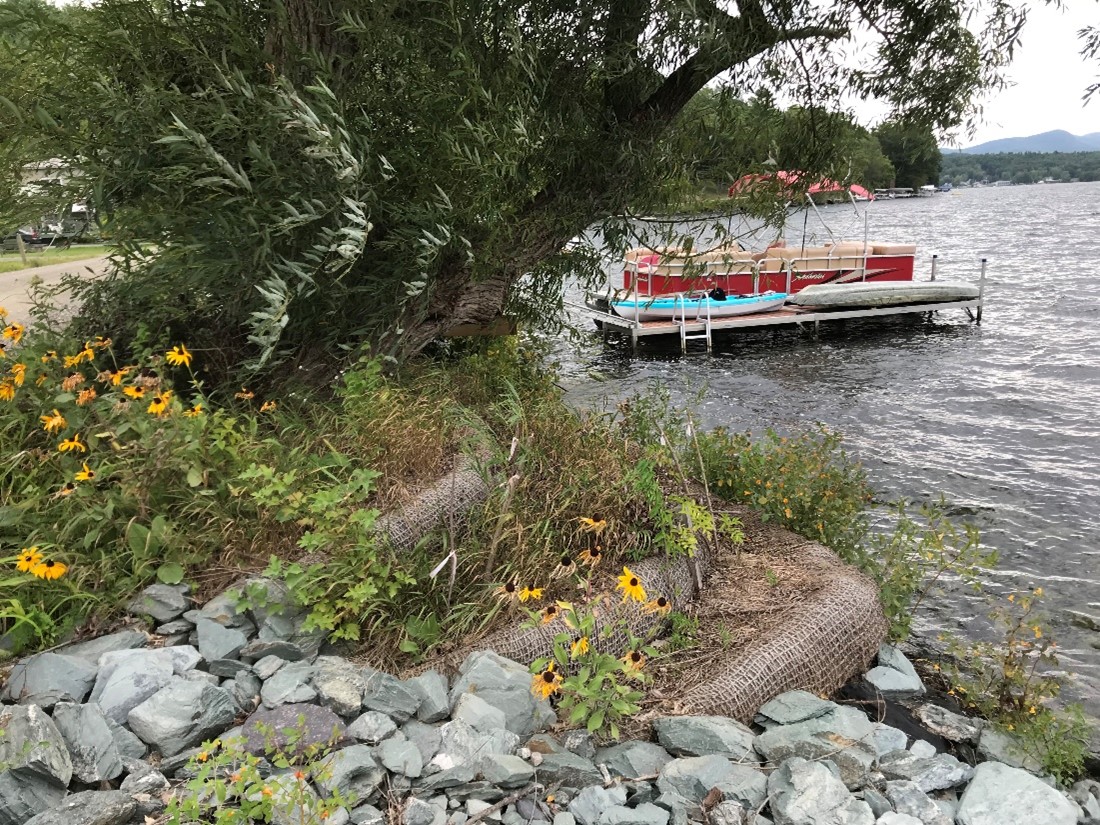PRESS RELEASE
For Immediate Release – June 5, 2023
Contact:
Alison Marchione, Lake Shoreland Coordinator
Department of Environmental Conservation
802-490-6128, Alison.Marchione@vermont.gov
Guidance for Property Owners to Help Protect Shorelands in Vermont
Montpelier, VT – The Vermont Lakes and Ponds Program offers guidance to help property owners protect and restore lake side properties. The Shoreland Best Management Practices guidance contains multiple Best Management Practice documents. Each document highlights different activities that can improve water quality and the health of lakeshore habitat. Examples of activities include planting native trees and shrubs, installing rain gardens to absorb runoff, improving driveways and pathways, and creating no-mow zones.
“Vermonters rely on healthy lakes for clean water, wildlife habitat, property values, and great places to fish, swim, boat, and relax,” said Department of Environmental Conservation Commissioner John Beling. “The Vermont Legislature passed the Shoreland Protection Act in 2014 to allow reasonable development along shorelands while protecting these and other benefits.”
The Shoreland Protection Act regulates new activities in protected shoreland areas. These areas include all land within 250 feet of the mean water level – often, the average summer water level at the shoreline – of a lake that is greater than 10 acres in size.
Under the Act, property owners need a Shoreland Protection Permit to create cleared areas (removing vegetation, including trees, shrubs, and disturbances to the natural ground cover) or impervious surfaces (any hard or solid surfaces like roofs, roads, and parking lots where water runs off instead of soaks in) in protected shoreland areas.
Shoreland property owners can learn what a healthy shoreland looks like, how Vermont manages its public waters, and what regulations to be aware of within the Sharing the Edge booklet. To ask questions about proposed projects, property owners are encouraged to reach out to their regional Lake and Shoreland permit analyst. Property owners can also use the online Permit Navigator tool to find out what other state environmental permits might be needed for their projects.
“The Vermont Lakes and Ponds Program has created a lot of great resources for shoreland property owners, including guidance on installing lakeshore best management practices,” said Beling. “By using these practices, property owners can help preserve the important benefits of Vermont’s lakes.”
The Vermont Lakes and Ponds Program also oversees the Lake Wise Program, a voluntary initiative that awards shoreland property owners for developing and managing their property in a lake-friendly manner. The Lake Wise Program aims to inform shoreland owners about how to reduce runoff and erosion into the lake while maintaining a healthy lakeshore ecosystem.
For those who are looking to improve their shoreland property to go above and beyond the Shoreland Protection regulations, the Lake Wise Program can provide guidance and technical assistance. Contact Alison Marchione, Lake Shoreland Coordinator, with any Lake Wise questions at Alison.Marchione@vermont.gov or 802-490-6128.
###
The Department of Environmental Conservation is responsible for protecting Vermont's natural resources and safeguarding human health for the benefit of this and future generations. Visit dec.vermont.gov and follow the Department of Environmental Conservation on Facebook and Instagram.

Healthy lakeshores provide wildlife habitat, reduce erosion, and protect water quality.

A shoreland property owner used a best management practice for encapsulated soil lifts to reduce erosion and stabilize the shoreline along Lake Bomoseen; the lifts or terraces also help to protect water quality and recreate wildlife habitat.
